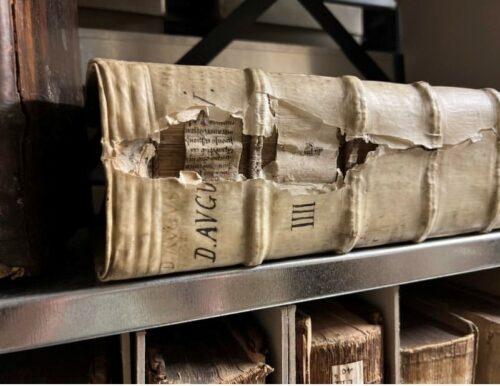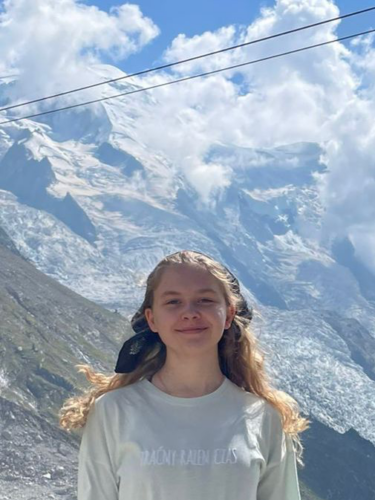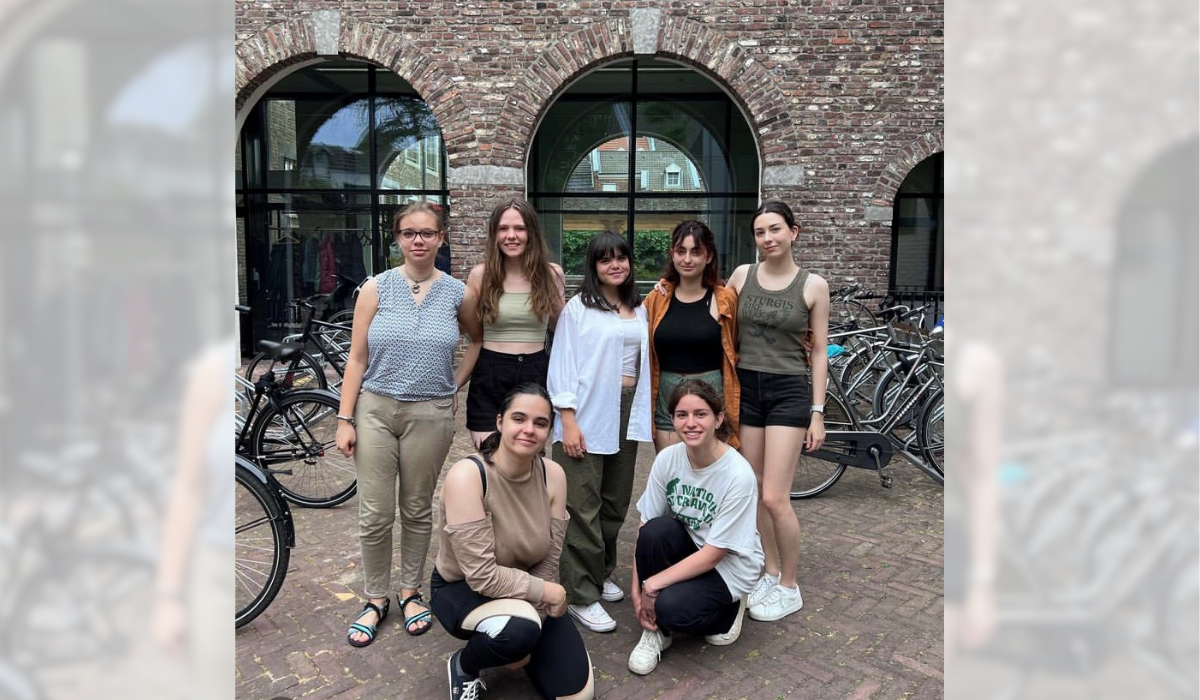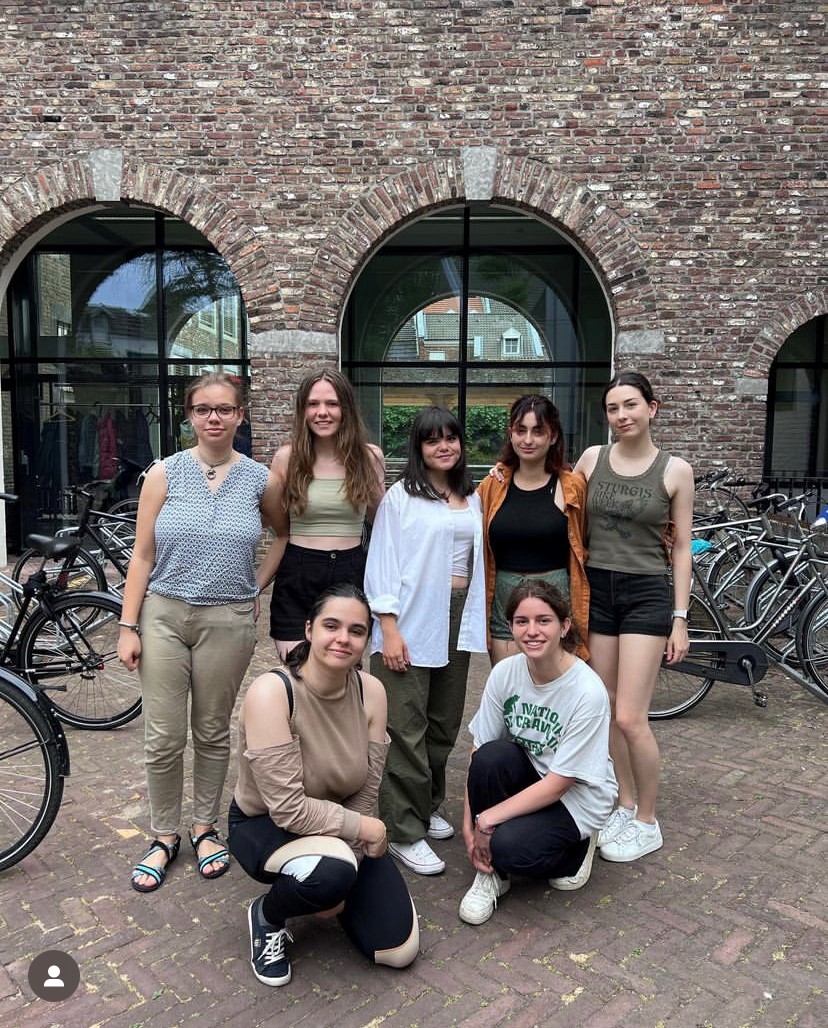The group of Science Programme students who analysed rare books in the UM Inner City Library as part of the “What’s the Matter” project.
What do rabbit skin, bones, eggs and fish have in common?
These animal products were all employed in the 17th and 18th century to produce glue for bookbinding. This intriguing fact is just one of the many fascinating discoveries made by students from Maastricht University (UM) over the past few weeks.
As part of their “What’s the Matter” project, a group of eight students from UM’s Science Programme spent many hours in the company of thousands of old and exceptionally rare books housed in the Special Collections depot of the UM Inner City Library to scientifically analyse a few of them. They learned how to handle old books with the utmost care and examined the materials used in the production of the books. Their primary focus was on understanding the causes of damage to old books and to provide insights for further research and preservation efforts.

An old book from the Maastricht University’s Special Collections.
Kasia Godziejewski, an 18-year old student and a member of the research team, remarked that the materials used to make these books tell just as much of a story as the words inside. “One of the books I held in my hands had a cover made of tortoise shell, which is incredibly rare. The fact that the Special Collections possesses such a book is truly special.” Godziejewski also expressed intrigue about the various types of glues used centuries ago to bind the pages. “Before our research, I knew little about glue, but I learned that the glue made from animal products is actually what attracts the insects to it, because for them the glue is the most delicious part of the book.”
According to the students’ research report, white or clear-coloured glues suggest an origin from eggs or wheat, while yellow or brown glues indicate hides or bones.

Kasia Godziejewski (18), one of the students who took part in the “What’s the Matter” project.
The Special Collections
The library houses extraordinary Special Collections, including the so-called ‘Jesuits Library’, UM Library’s most important special collection, comprising some 250,000 volumes mainly in the fields of philosophy, history, anatomy, literature, theology, law and social sciences. It also boasts other rarities, such as a handwritten New Testament from 1471, a prayer book owned by Louis Napoleon, and a collection of 56 richly illustrated children’s books from the first half of the 20th century. Among these are first editions of fairy tale books by renowned authors such as the Brothers Grimm.
Damage to these ancient books can result from environmental factors, natural disasters, insects, chemicals and improper handling. Preserving and restoring them are not only crucial for public and scholarly use but also demand a comprehensive understanding of their composition and historical context.
Emilia Schmidt (20), another member of the student research team, focused on the different types of ink employed in old books. She found the study of ink fascinating. “Iron gale ink was commonly used during the Middle Ages until the 19th century. It contains iron, which oxidizes and can eventually cause the letters to crumble out of the paper. You can actually witness letters falling out of the paper – sometimes entire words and paragraphs.”

Emilia Schmidt (20), one of the students who took part in the “What’s the Matter” project.
Schmidt thoroughly enjoyed seeing the Special Collections depot, where the books are preserved under special conditions and available for students, researchers, and members of the public.
“This was my first glimpse inside the depot and I found it captivating. I have always held a general interest in books, and witnessing these ancient books was really intriguing,” she said about this project, which unexpectedly combined her love for books and her passion for science.
Contact us
Maastricht University Library stimulates, supports and facilitates the use of UM’s Special Collections and the thoughtful integration of digital technology to advance education and research. Think about how using these books can add value to some of your courses. If you want to know more about how we can support you, contact curator Odin Essers via Ask your librarian. Follow the Special Collections on social media: Maastricht University Special Collections (@specialcollectionsumlibrary) | Instagram and Special Collections – Maastricht University Library | Maastricht | Facebook



0 Comments